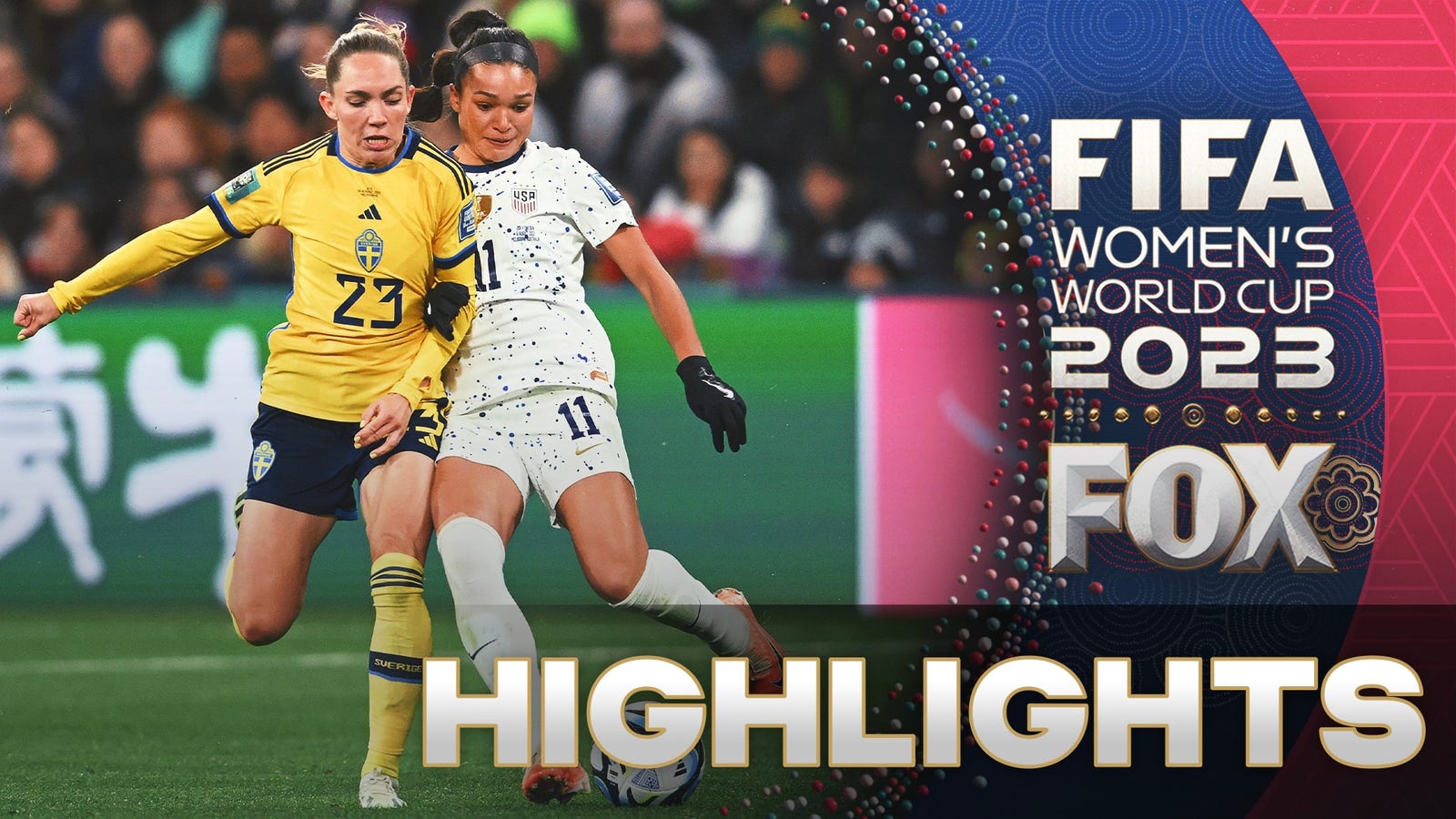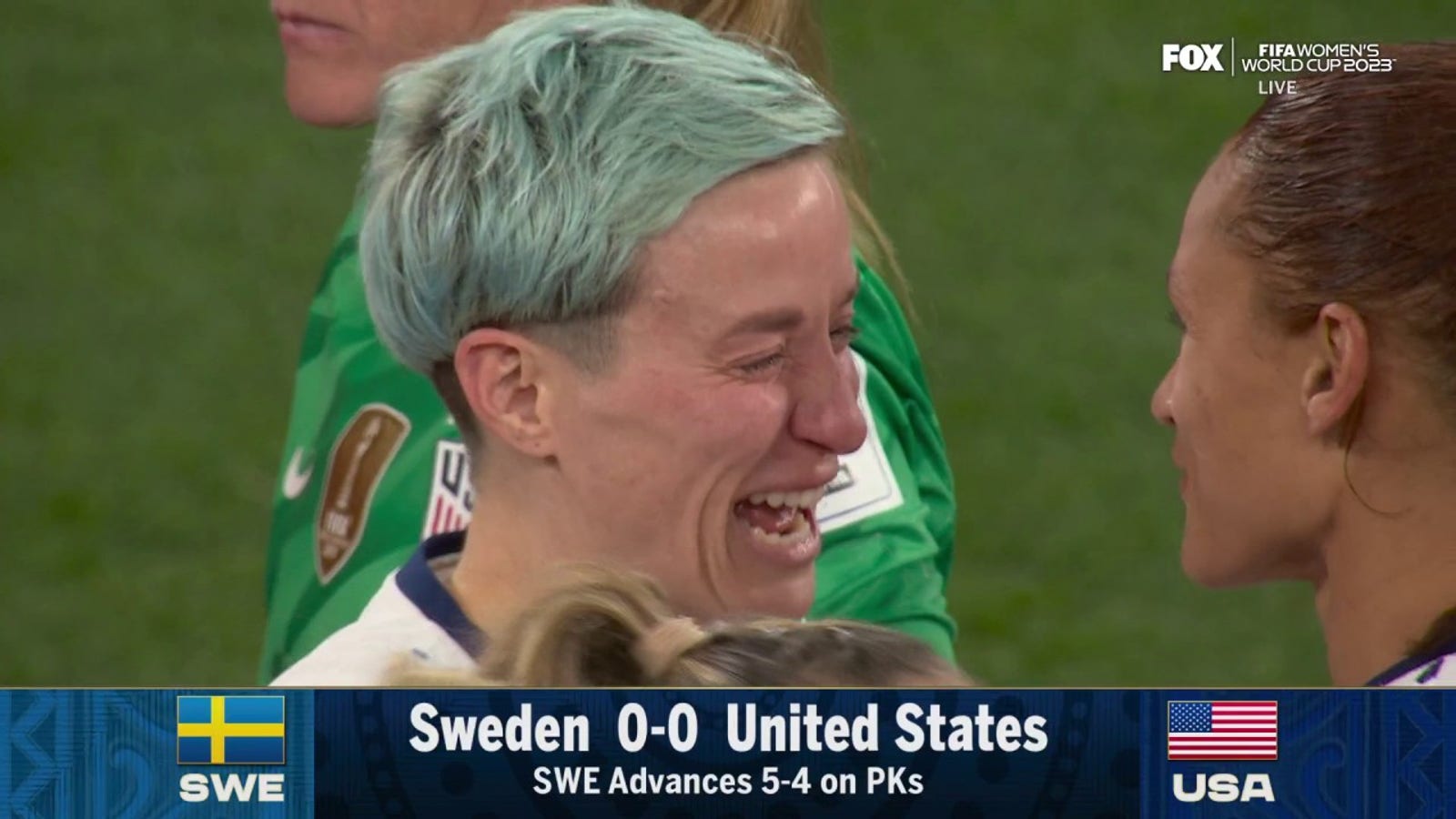
MELBOURNE, Australia — The United States‘ run at the 2023 Women’s World Cup is over, and so is the Americans’ dream of becoming the first team, women’s or men’s, to win three straight titles at soccer’s marquee event.
Following a scoreless 120 minutes, Sweden beat the U.S. in a penalty shootout in Sunday’s round of 16 match at Melbourne Rectangular Stadium, sending the four-time champions home from a World Cup before the semifinals for the first time in program history.
Alyssa Naeher saved Rebecka Blomqvist’s attempt from 12 yards and saw another Swedish shot sail over the crossbar, but misses by Megan Rapinoe, Sophia Smith and Kelley O’Hara in the tiebreaker ultimately doomed the USWNT.
The Americans had never finished worse than third at the previous eight Women’s World Cups.
What went wrong for the U.S. at this World Cup?
Despite a vastly improved performance against Sweden, the Americans’ inability to finish their scoring chances is the reason they’re going home. It’s a stunning end for FIFA’s No. 1-ranked team, which was fully expecting a much longer stay at Australia-New Zealand 2023.
This U.S. squad set all sorts of new records Down Under, none of them good.
Never before had the U.S. not won at least two group games. Never had it failed to reach the final at two major tournaments (Olympics and World Cup) in a row. Only one other time over the last three decades has the USWNT not won at least one of those events in consecutive tries, and that was 20 years ago.
The writing was on the wall for Vlatko Andonovski’s team from start to finish at this tournament. In truth, the doubts about the Americans’ chances of making history this summer Down Under should have begun at the Tokyo Olympics two years ago.
Then as now, the U.S. never found its groove at that event, eventually crashing out in the semis to North American rival Canada before rallying to claim the bronze medal.
It was easy to explain away that performance, though. Because of the global pandemic, the team hadn’t spent much time together. Families weren’t allowed to travel to Japan. The matches were played in empty stadiums.
There was always a sense the U.S. would figure things out well before the World Cup. In many ways it looked like they had. The squad was riding a nine-game winning streak coming in. In February, they swept a trio of bona-fide title contenders — Brazil, Canada and Japan — at the SheBelieves Cup, conceding just one goal across the three games.
But the U.S. was utterly toothless in every game here. Despite having almost 60 percent of possession versus Sweden and generating 22 shot in all — 11 of them on target — the Americans couldn’t score the goal they needed to win before the contest was decided from the penalty spot.
In the end, it was a self-inflicted wound, one that will take a long time to recover from.
Will Andonovski remain as coach?
Not likely. The 46-year-old’s contract is up this year, and after failing to reach the final of the either major tourney he went to, U.S. Soccer will probably be looking for a new coach.
Hailed as a modern, tactically savvy players’ coach when he was hired to replace Jill Ellis — just the second manager, women’s or men’s, to win back-to-back World Cups — following the 2019, Andonovski was never able to get the best out of his team.
Not all of that was his fault. With a mandate from USWNT general manager Kate Markgraf to both play a possession-based game and move on from some of the veterans who helped win both the 2015 and ’19 crowns, this was always going to be a cycle defined by radical chance. Injuries didn’t help.
Catarina Macario was supposed to occupy the striker role that 34-year-old Alex Morgan has continued to fill in her absence. Without Mallory Swanson, Andonovski turned to 21-year-old Trinity Rodman, an undeniable talent who wasn’t quite ready for the role.
This much is for sure: If Andonovski is replaced, his successor must hit the ground running.
How do the Americans regroup for the short term?
Megan Rapinoe is retiring. This might have been Morgan’s World Cup swansong. Same for fellow vets Crystal Dunn, Julie Ertz and Alyssa Naeher, though some or all will probably stick around for the Olympics — a competition the U.S. hasn’t won since 2012.
In many ways, this is a USWNT caught between generations. The elders were just a little too old this summer, the youngsters a little too young.
The program now belongs to those few who bridged the two cohorts here: Lindsey Horan, Rose Lavelle and Swanson. Macario, who had emerged as a superstar before tearing her ACL last year, is still just 23. Rodman, Smith and Naomi Girma will all fill major roles going forward.
As for the rest, who knows? New players, particularly along the backline, must be inserted quickly.
What does the long-term future look like for the USWNT?
The Women’s World Cup debuted in 1991. Women’s soccer became an Olympic sport five years later. Over the first 15 tournaments combined, the U.S. won eight.
That sort of dominance is almost certainly over for the Americans. This World Cup has proved just how quickly the rest of the planet is catching up, and that’s only going to continue. The most vexing problem facing U.S. Soccer is how to produce elite international players.
For decades, the NCAA did the job for them, but that’s no longer a sufficient pathway. The explosion of European club soccer has changed the equation; the likes of France’s Lyon and Spain’s Barcelona have the ability to supercharge the development of talented youngsters by having them train with senior players from their early teens.
Those clubs also benefit from the facilities and financial might of their men’s teams, most of which have been around for a century or more. The NWSL doesn’t have those. They don’t have dedicated youth academies, either.
Nor can NWSL benefit from selling their best prospects to European suitors the way MLS clubs can on the men’s side, where the proceeds from a single transfer can underwrite a club’s academy for years. To wit: MLS Next Pro, the men’s domestic league’s development circuit, has a higher operating budget than the entire NWSL.
The good news is, U.S. Soccer knows investing in professional youth development on the women’s side is the only way forward. The federation is committed to working with the NWSL and youth clubs to ensure that it happens.
The USWNT will continue to compete for World Cups and Olympic gold medals in the decades to come. But while Sunday’s loss marked the program’s first ever round of 16 exit, the unstoppable progress of the women’s game — progress the U.S. has played a huge role in ushering in — all but ensures that it won’t be the last.
The “World Cup Tonight” crew reacts to the United States being eliminated from the 2023 FIFA Women’s World Cup
Doug McIntyre is a soccer writer for FOX Sports. Before joining FOX Sports in 2021, he was a staff writer with ESPN and Yahoo Sports and he has covered United States men’s and women’s national teams at multiple FIFA World Cups. Follow him on Twitter @ByDougMcIntyre.
FIFA WORLD CUP WOMEN trending

Get more from FIFA Women’s World Cup Follow your favorites to get information about games, news and more









